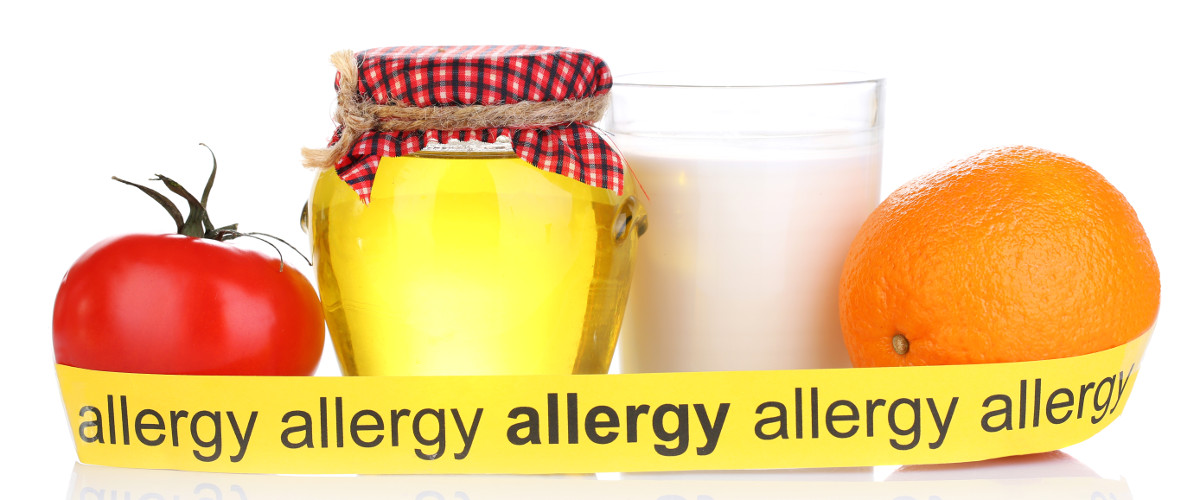Imagine reacting so violently to a food that consuming even a minuscule amount could send you to the emergency room. Food allergies are more serious than many people realize. They affect an estimated 15 million people in the U.S., including 1 in 13 children.
Is it an allergy or intolerance?
We all have a friend who’s “allergic to gluten.” Chances are, though, what they experience is a gluten sensitivity or intolerance, not an allergy.
Food intolerance is much more common than food allergies and is not caused by the immune system. Food intolerance usually comes on gradually, generally only if you eat a lot of the intolerable food, and is not life-threatening. Symptoms caused by food intolerance are varied, but sexy gastrointestinal symptoms such as bloating, diarrhea, nausea, vomiting and irritable bowels are common. Symptoms also can include skin rashes, fatigue, joint pain, dark circles under the eyes and night sweats.
The onset of food intolerance symptoms may be delayed by many hours after eating the offending food and may last for several hours, even into the next day. A good rule of thumb: If something upsets your system, don’t eat it. (Even if that something is cheese, chocolate or wine.)
An intolerance will bother you. An allergy can kill you.
With a classic allergy, symptoms begin within minutes. They involve several parts of the body and produce reactions such as hives, wheezing, abdominal cramping, vomiting, nausea and diarrhea.
Food allergies are caused by the immunoglobulin E antibody, or IgE. Your body forms antibodies when exposed to the allergen. The antibodies circulate through your bloodstream and are bound to mast cells, particularly around your eyes, conjunctiva, mouth, throat, tonsils and lungs. Once the antibody is on the cell, the reaction causes it to disperse chemicals, like histamine, that cause itching and swelling when they get in the tissue. That is why we take antihistamines: to reduce the response. Other chemicals mediate the effect on blood, nerves and immune cells on mast cells, which means you must have been exposed in order to produce the antibodies. Exposure triggers the symptoms, with severity depending upon how sensitive you are, how much of the allergen you were exposed to and possibly other factors, as well.
The most common food allergens include milk, eggs, fish, shellfish, wheat, peanuts, soybeans and tree nuts such as almonds, walnuts and pecans. Peanuts are responsible for almost half of all fatal reactions, partially because of the way we eat and prepare them. Most peanuts are roasted, but the protein allergens are resistant to the process.
I don’t want to die from eating peanuts. What can I do?
It’s important to take precautions regarding exposure to allergens, as they can come not only from direct ingestion, but also through their presence in other foods.
Food oils, such as corn, peanut, soybean and such, are a source of confusion. In fact, with few exceptions, the allergens are proteins, which normally can’t be dissolved in oil. Therefore, heat-refined oil from any food source does not contain the protein. In restaurants, however, oil can be contaminated because of what is cooked in it. For example, if a doughnut is cooked in peanut oil, and there are chopped peanuts in the frying vat, the oil can absorb enough allergens that the plain doughnut could cause a reaction if someone is very sensitive. Peanut allergen proteins are stable, but peanut oil is fine as long as the proteins are not returned into the oil.
You have probably noticed peanut, nut and allergen warnings on most foods. Manufacturers have taken preventative measures in labeling and processors take all precautions to avoid allergens, but it is not a guarantee. Exercise caution, read all labels carefully and ask if you’re not sure.
If you suspect that you may have a food allergy, see a specialist who can perform either 1) a skin test, in which a tiny extract of the food is placed on the skin, followed by a pinprick, then 15 minutes of observation for swelling and redness or 2) a blood test to measure IgE antibodies.
Should you test positive, it is imperative to be prepared for an emergency. There is no cure for food allergies. (You can build up tolerance to food intolerance, though. An immediate, self-administered dose of epinephrine will help with severe allergy symptoms until you get to the emergency room, and yes, the emergency room is mandatory. Self-injectors are available without a prescription. They are fully loaded; all you do is remove the safety cap and inject yourself. Epinephrine will counteract released mast-cell mediators, stabilize your blood pressure and relax your airway muscles so you can breathe. It reduces swelling and counteracts the potentially life-threatening major effects.
Because the severity of an allergic reaction is difficult to predict, there are a few guidelines in determining when to inject epinephrine. If you experience something beyond a few hives — for example, swelling in the throat, chest tightening, lightheadedness, severe abdominal pain, vomiting or anything beyond itchiness — use an epinephrine rescue medication. If you have a lot of hives, use it. When it doubt, err on the side of caution and use it. Inject yourself while calling 911. The shot will last 15 to 20 minutes — hopefully long enough to get you to an E.R.
Pro tip: If you need an epi pen, keep one in your cam room and also in your bag. And always be mindful of the expiration date!
—
Jenna Andre is a total gearhead who also appreciates the simpler things in life. Email her at Jenna.Andre@ynotcam.com.
Check out these news ladies talking about allergies and sensitivity vs. intolerance.










